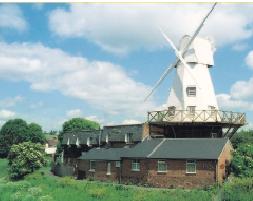In an amazing report to Rye Town Council Rye District Councillor Sam Souster claimed that Rother District Council was an “undemocratic body seemingly incapable of managing its responsibilities in Rye in a satisfactory manner”.
Rye is a medieval town in East Sussex.
In an amazing report to Rye Town Council Rye District Councillor Sam Souster claimed that Rother District Council was an “undemocratic body seemingly incapable of managing its responsibilities in Rye in a satisfactory manner”.
During the Napoleonic Wars many prisoners were taken on both sides. Those taken by the British were shipped back to Britain and held in prison hulks and prisons through out the land. Dartmoor Prison was built for this purpose. Continue reading French Officers Escape Through Rye
Bournes the Rye removal company have been presented with the famous UTS Dancing Elephant after winning the award for the second time since its conception in 1993. Continue reading Bournes UTS Celebrate Dancing Elephant Award
Come walk with me stranger - what do you see A small part of England where home is to me Built on a hilltop with church upon high It's wonderful spires reaching up to the sky Come walk with me stranger - what do you hear The town whispers history as you draw near Ypres Castle - Landgate the Inn called Mermaid Where in days gone by the smugglers did trade. Come walk with me stranger - what do you see Cobbled streets, oak beamed houses - white with plaster Once, no twice, burned by the French - such disaster Rebuilt again in fourteen twenty For folk had courage and energy plenty. Come with me stranger - what do you see The town of my birth of my father and mother My children, my husband, a sister and brother Where neighbours and friends I've known all my life There for you when needed in sadness and strife. Come stranger will you gather round me open your eyes and what do you see My town with it's beauty in the eye of the beholder Where I know one day as I grow older I will have to come to a place of rest but already I have chosen the best For there on a hilltop I will lie Forever overlooking my home, MY RYE.
All I can surmise is that it must be carelessness!All articles, photographs, films and drawings on this web site are World Copyright Protected. No reproduction for publication without prior arrangement. © World Copyright 2017 Cinque Ports Magazines Rye Ltd., Guinea Hall Lodge Sellindge TN25 6EG
These great photographs of John Mills and the filming of “Dunkirk” at Rye and the local district in 1957 were brought into “Rye’s Own” by a local lady. Continue reading Dunkirk Film Photos
Plans for Rye in Bloom 2005 activities are already underway.
This year’s Rye in Bloom competition will be judged between 29th June and 5th July by a panel of 8 judges who will, individually, visit all the entries during the allotted week. They will mark each display on its impact, colour, suitability, qua lit y and maintenance, particularly taking note of the year round interest in the resi dential front gardens. The idea for a panel of judges was suggested by one of last year’s entries and will give a very fair overall picture. Continue reading Rye in Bloom
Dear Editor
My cousin Eve Brown sent me a December 2004 “Rye’s Own” and I was interested in the article on the efforts on raising money for Rye St. John Ambulance service. Good wishes to them. My father, Ron White, was a member at Rye for many years, he later became a full time member of the Ambulance Service. Continue reading Pen & Ink
Snow! What a surprise, it came as rather a shock but did not last long in Rye. The Bay has always sheltered the town from cold weather, here in this little corner we seem to escape the worse. Continue reading Editorial
One of Rye’s favourite hotels, The Hope Anchor has recently been awarded a Three Star rating. Continue reading Three Star Hope Anchor

Actual documentary evidence on the history of Rye Mill is virtually non-existent. It was the subject of Victorian mezzotints and oleographs, but beyond that visual and literary records are silent. Whether a mill existed on the present site earlier than, say, 1850, is a matter of pure conjecture. We do know, however, that long before the Webb family, who used the mill for baking and bread-making before and after the Second War, came into residence the buildings had been given over to storing grain. Probably the last flour actually produced there was sold either before or during the First World War. Then the bakery was at the Mill Cottage – the old tall chimney of the bakehouse can be seen in the photographs taken in the 1920s. Continue reading The Rye Mill